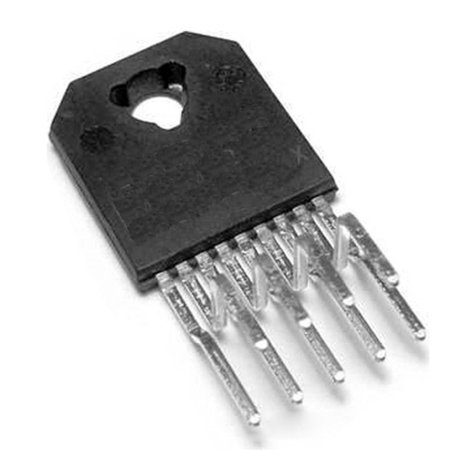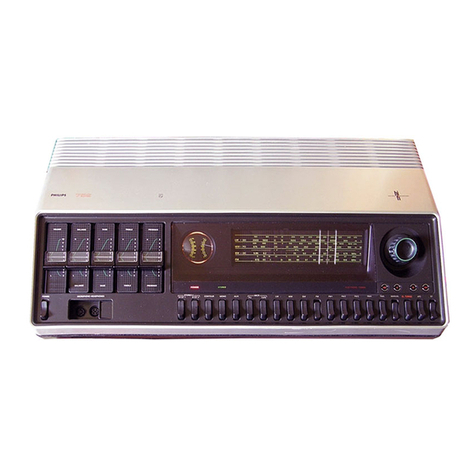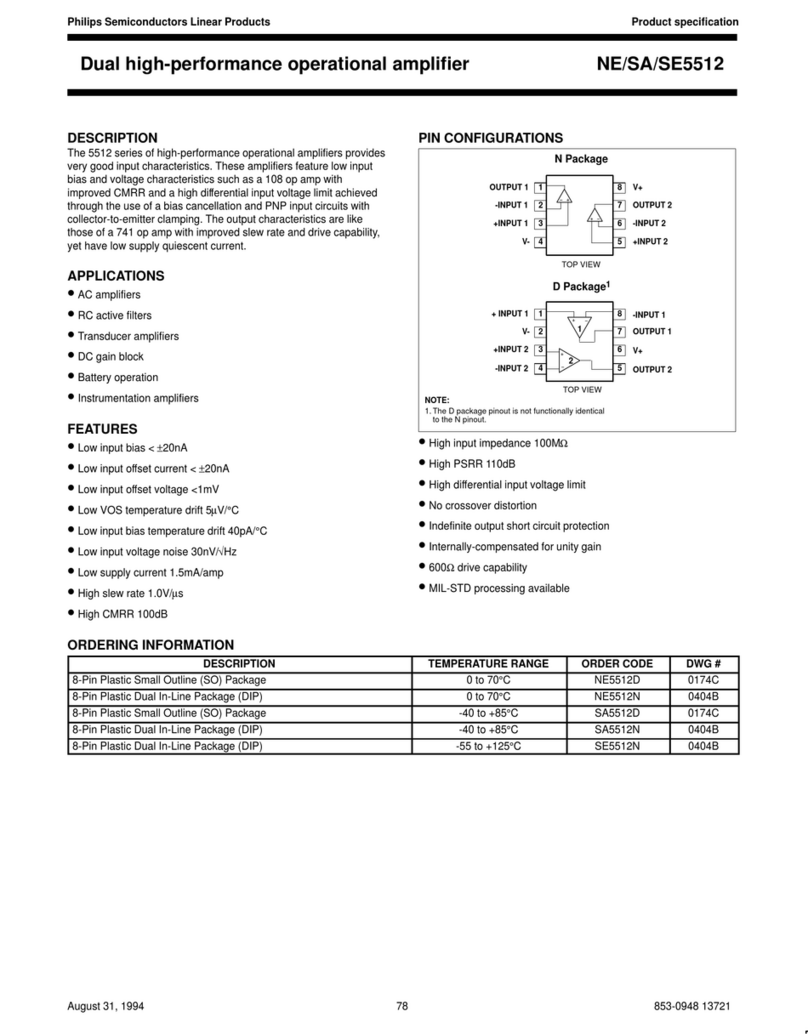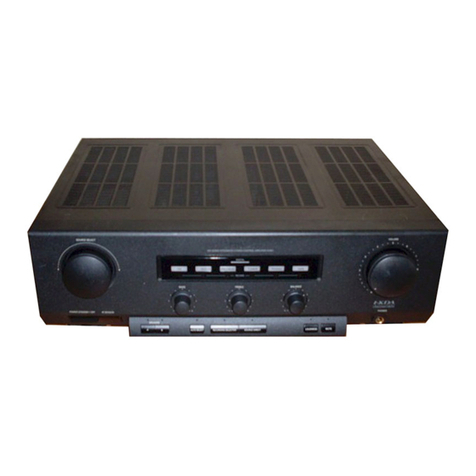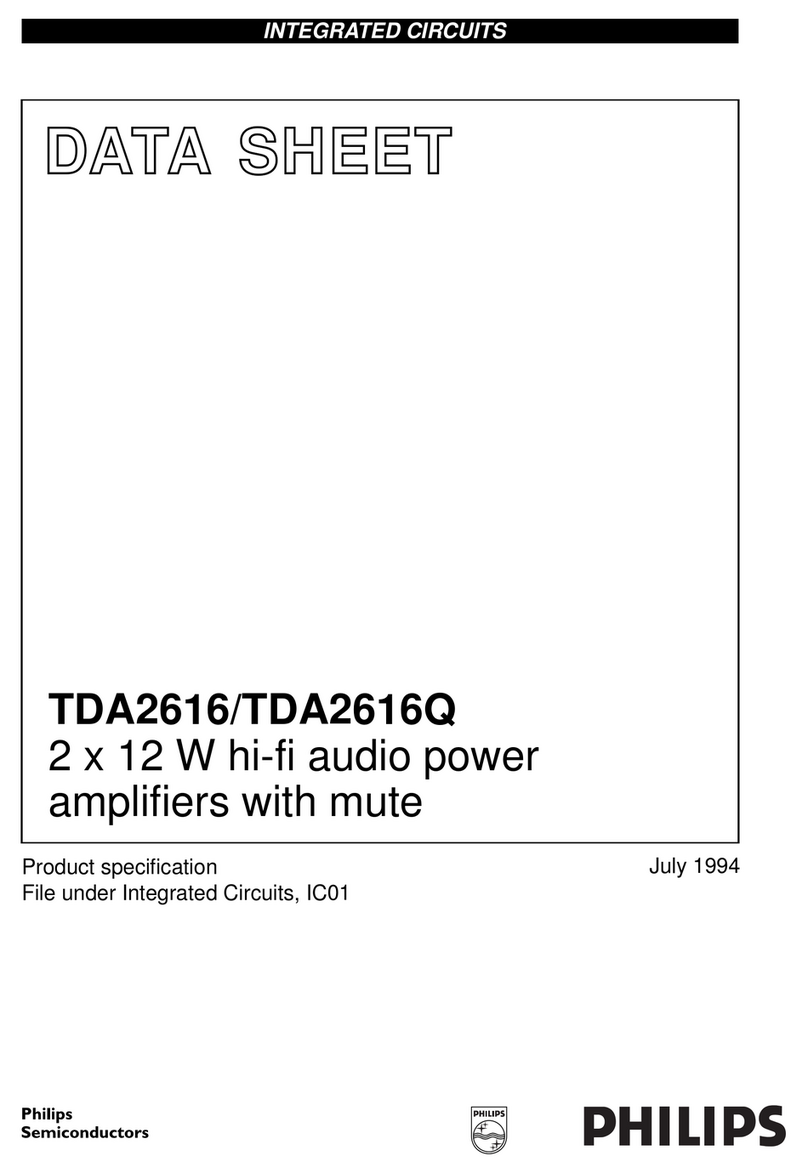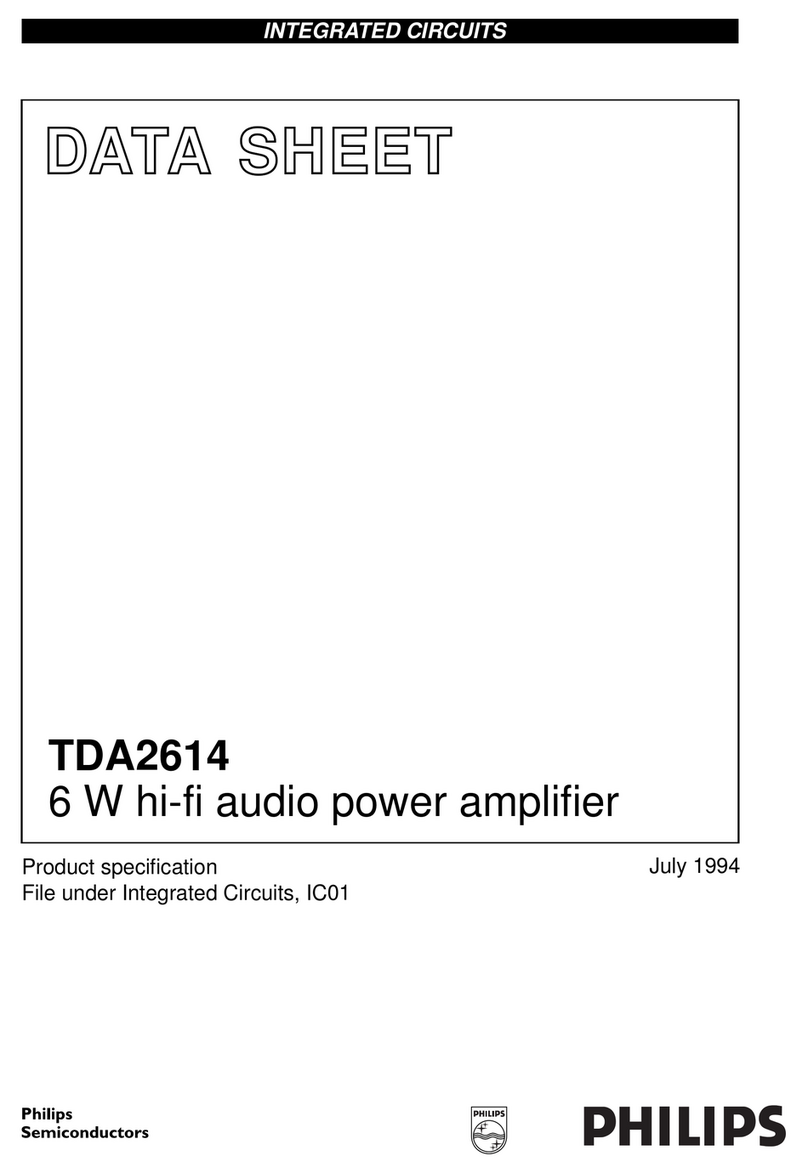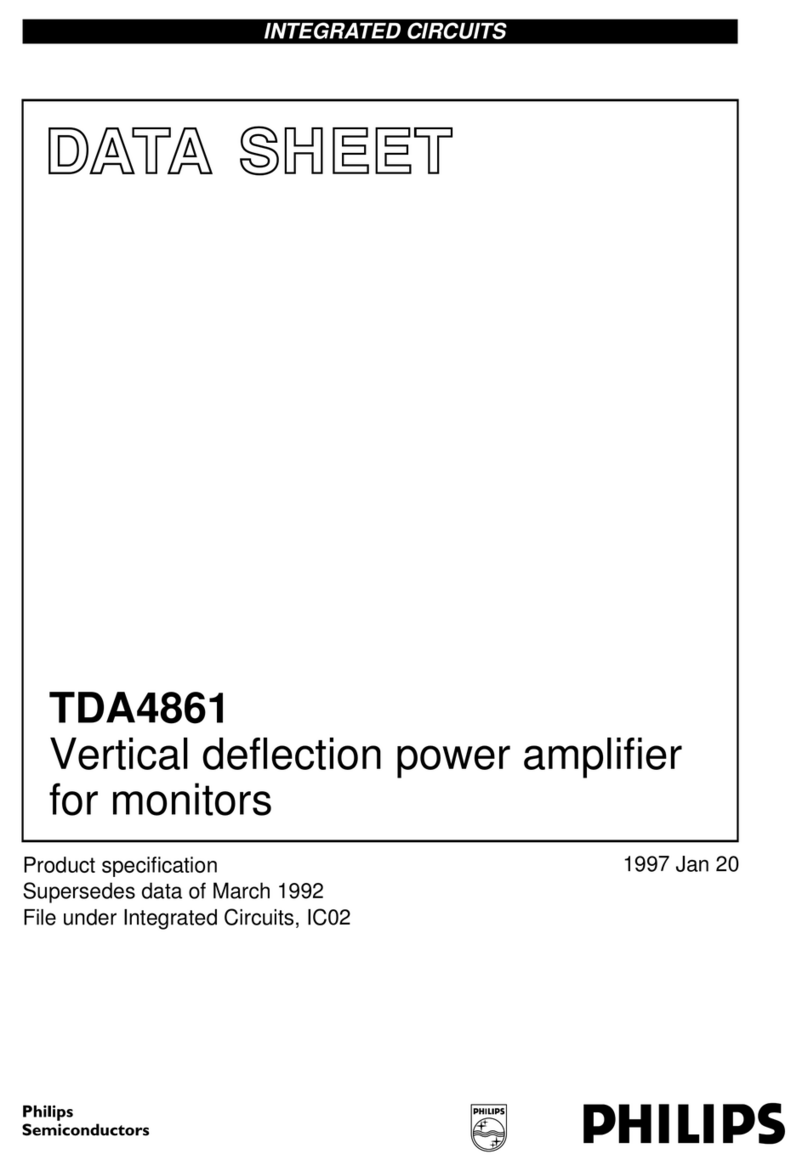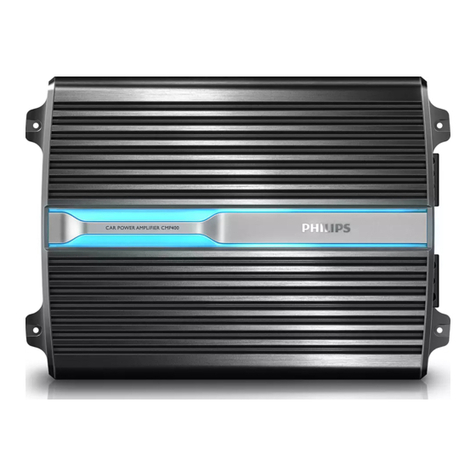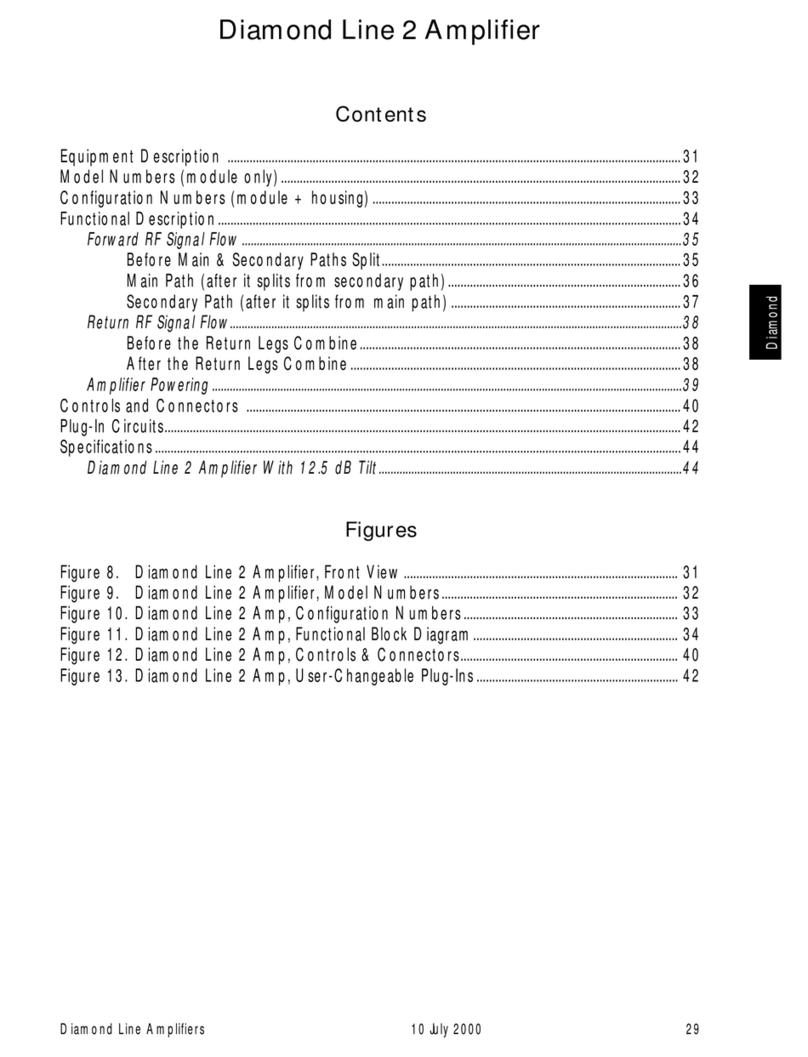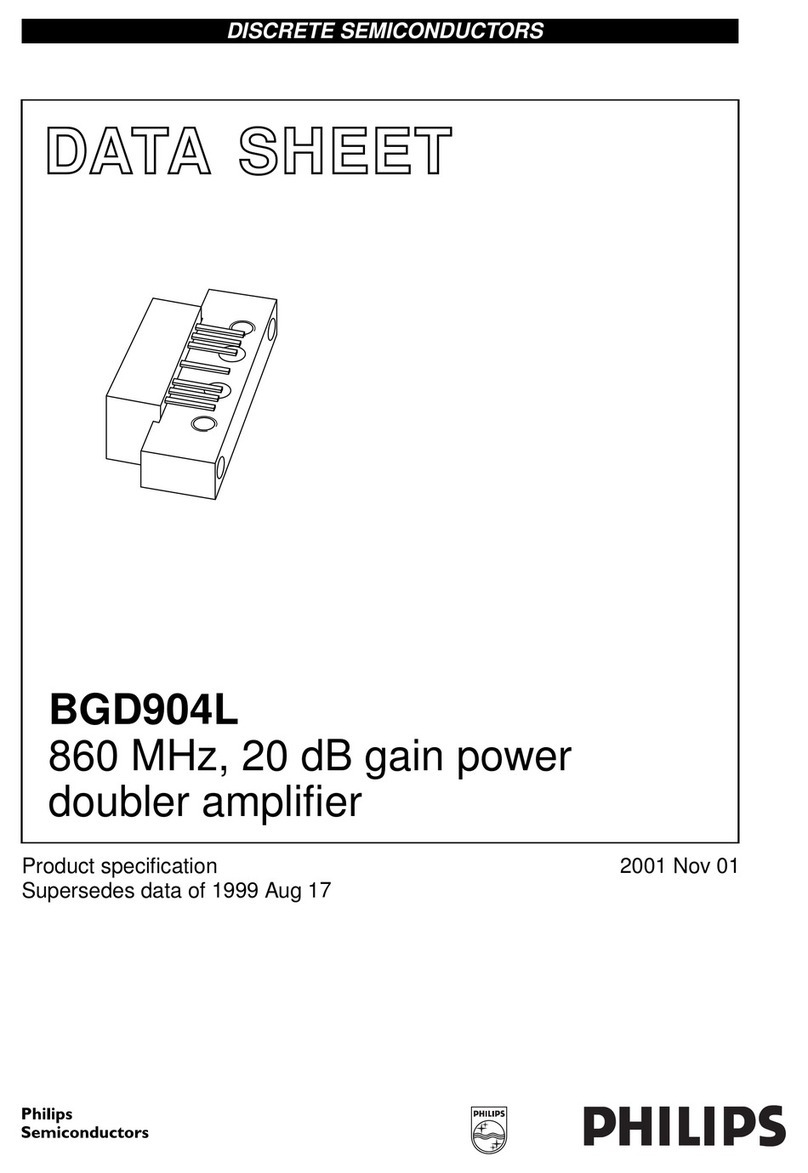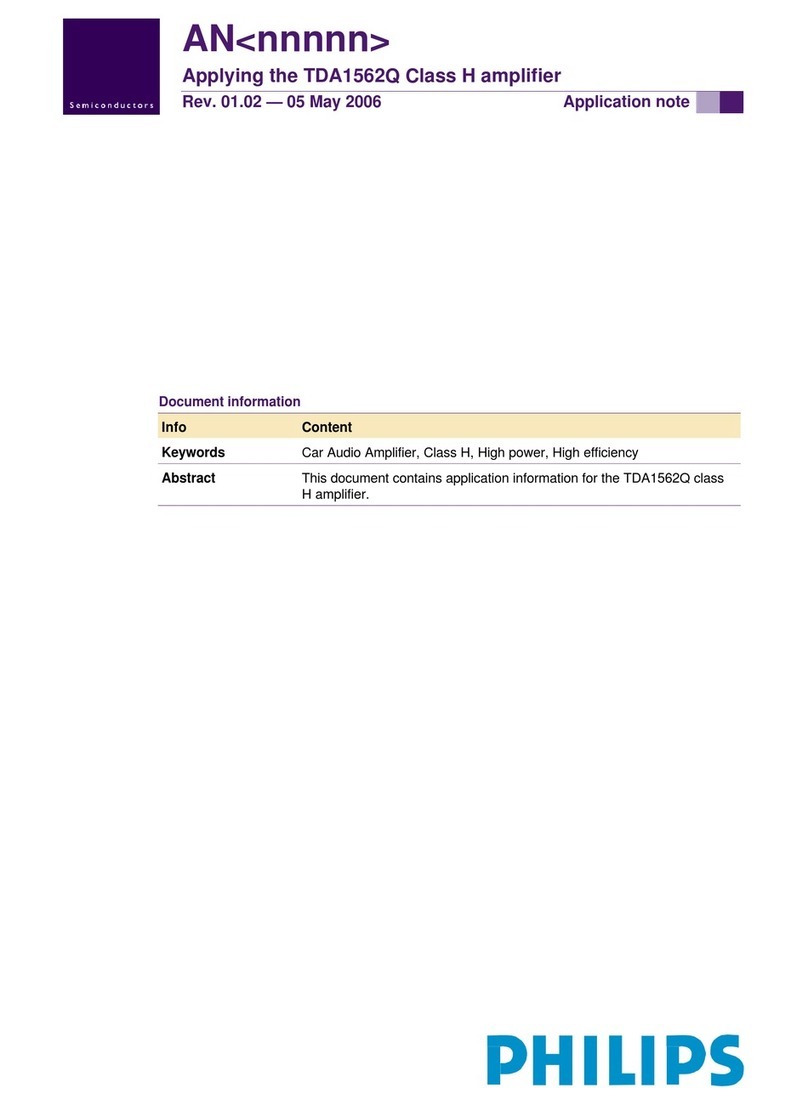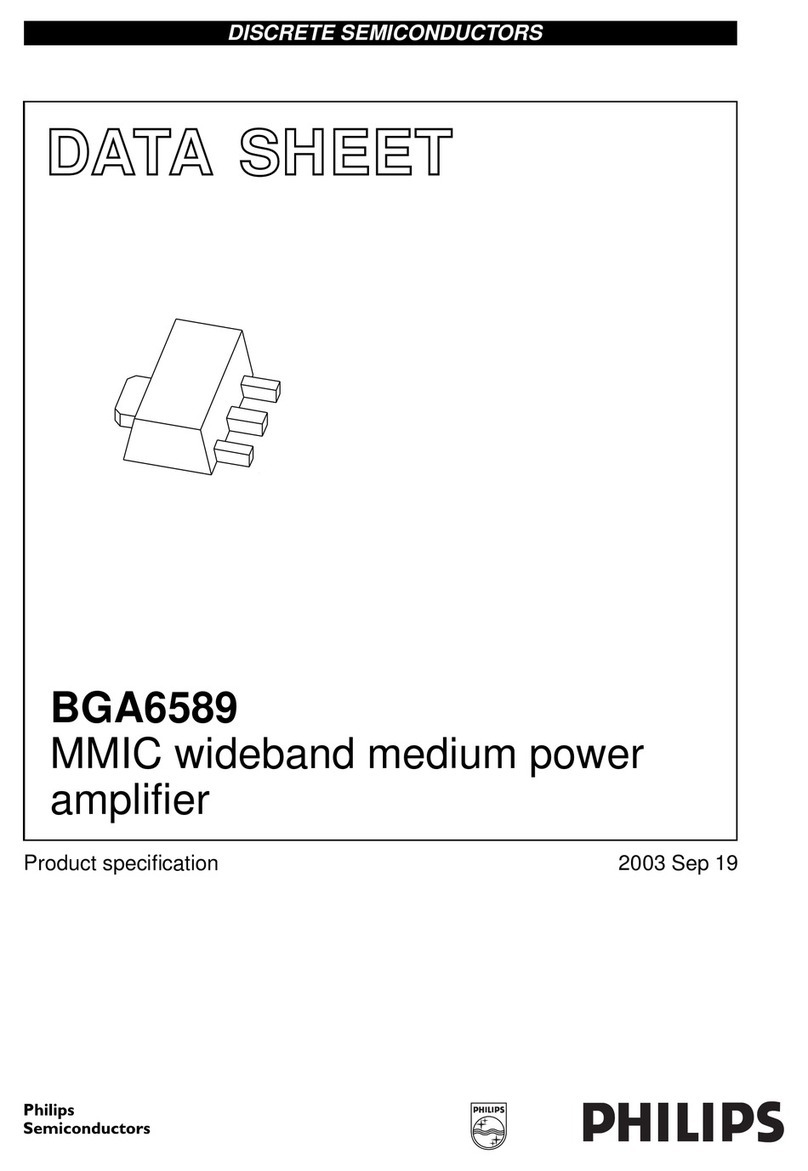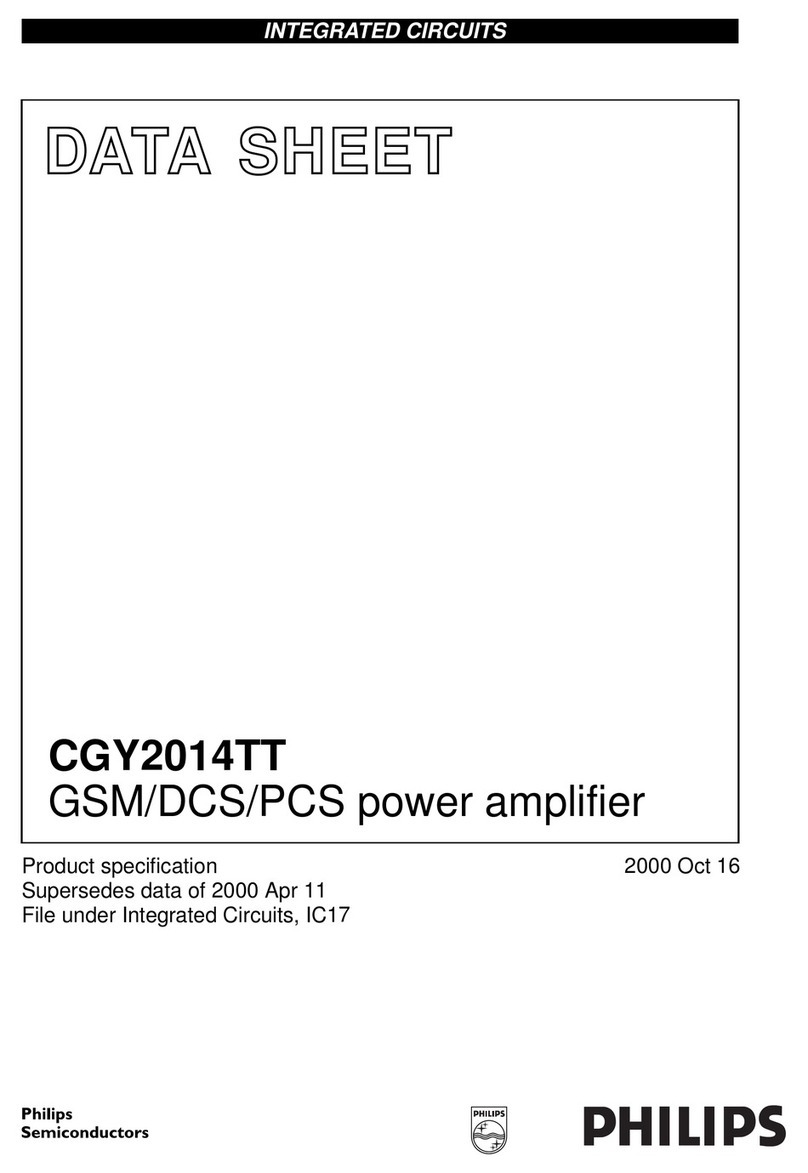
April 1991 10
Philips Semiconductors Product specification
IF amplifier/demodulator for FM radio
receivers TDA1596T
OPERATING CHARACTERISTICS
f = 10.7 MHz; VI= V20(rms) = 1 mV; deviation (∆f) = 22.5 kHz; modulation frequency (fm) = 400 Hz; de-emphasiss (pin 4)
= 50 µs; test circuit as per Fig.3; tuned circuit (QL= 19) aligned for symmetrical stop pulses; Tamb =+25 °C; unless
otherwise specified
SYMBOL PARAMETER MIN. TYP. MAX. UNIT
V4(rms) AF output voltage (RMS value) at
V20(rms) = 10 mV 180 200 220 mV
V20(rms) Start of limiting (FM, mute-off); (RMS value)
(Fig.13) 14 22 35 µV
Dependence of signal-to-noise ratio (in noise
frequency band 250 Hz to 15 kHz, unweighted)
on input voltage
V18(rms) for S/N = 26 dB −15 −µV
V
18(rms) for S/N = 46 dB −60 −µV
S/N at V20(rms) = 10 mV; ∆f = 75 kHz −82 −dB
THD THD (FM, mute-on) at V20(rms) = 10 mV; ∆f = 75
kHz; fm= 1 kHz; without detuning; without
de-emphasis; I7= 0 mA
−0.1 0.3 %
αDDynamic mute attenuation (Fig.14) −16 −dB
with fm= 100 kHz; ∆f = 75 kHz
αD∆f Slope of attenuation curve −0.8 −dB/kHz
THD (FM, mute-on) at V20(rms) = 10 mV;
∆f = 75 kHz; fm= 1 kHz;
detuning ≤± 25 kHz without
THD de-emphasis; I7= 0 mA (Fig.15) −−0.6 %
THD (FM, mute-off and compensated via
pin 3) at V20(rms) = 10 mV;
∆f = 75 kHz; fm= 1 kHz;
THD V7= V5−0.07 0.25 %
V3Voltage range at pin 3 for THD compensation 0 −V5V
AM suppression (FM, mute-off) with amplitude
modulation at 30% input voltage range
V20 = 300 µV to 100 mV (Fig.16)
−65 −dB
Power supply ripple rejection = 20log [∆V1/∆V4]33 36 −dB
Mute attenuation (FM-off)
= 20log [V4(FM-on/V4(FM-off)]60 −−dB
αD20 V4FM mute off )–(
V4FM mute,(on )–
---------------------------------------------------------log=
